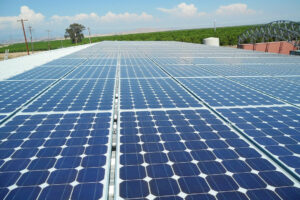By Sheldeen Joy Talavera, Reporter
THE Department of Energy (DoE) said power supply shortfalls resulting from El Niño’s impact on hydropower are expected to be filled by new solar power plants.
“Our challenge here in El Niño is the need to run all our sources of power that are available to us during this period,” Energy Secretary Raphael P.M. Lotilla said in a briefing on Thursday.
“We are not depending on hydropower plants precisely because there has been an advisory from PAGASA to prepare for the El Niño. That is why we are not using the Angat power plant for now,” he said.
PAGASA (Philippine Atmospheric, Geophysical and Astronomical Services Administration), the government weather service, forecasts a moderate El Niño, possibly intensifying in the coming months.
The Angat hydroelectric power plant in Bulacan was shut down on Nov. 6 and is due to return to service on Jan. 6. It is undergoing major repairs and rehabilitation of its penstock.
Irma C. Exconde, director of the Electric Power Industry Management Bureau, said the bureau is assuming hydroelectric power plants will be derated 70% during the dry spell, equivalent to 300 megawatts (MW) of dependable capacity.
“We have been monitoring hydropower plants because of the preparations for El Niño and we have assumed a 70% deration, particularly the large ones in Luzon and Mindanao,” she said.
Ms. Exconde said the bureau does not expect red or yellow alerts “because of the power plants coming in 2024.”
Yellow alerts are issued when reserves fall below a designated safety margin. Red alerts are raised when the supply-demand balance deteriorates further, signaling the possibility of rotational brownouts.
“The assumption (is that) forced outages (will be within acceptable limits) with no red and yellow alerts for next year. This also assumes an El Niño lasting until the second quarter of 2024,” she said.
Solar power plants entering operations next year will be “favorable under an El Niño scenario,” according to Ms. Exconde.
This includes solar power projects in Pangasinan, Subic, Batangas, and Pampanga which have a combined capacity of 702 MW.
The DoE has reported that wind, natural gas, and solar dominate the pipeline of indicative projects, or those currently in the pre-development stage, as of August. These indicative projects have capacities of 34,080.50 MW, 7,987.60 MW, and 7,811.86 MW, respectively.
Despite the low risk of power interruptions, Mr. Lotilla said coal-fired power plants sometimes do not work well in hot temperatures.
“That’s why we cannot assume that there will be no interruptions. But we should try to minimize the interruptions by making sure that there are alternative plants that can come in,” he said.






